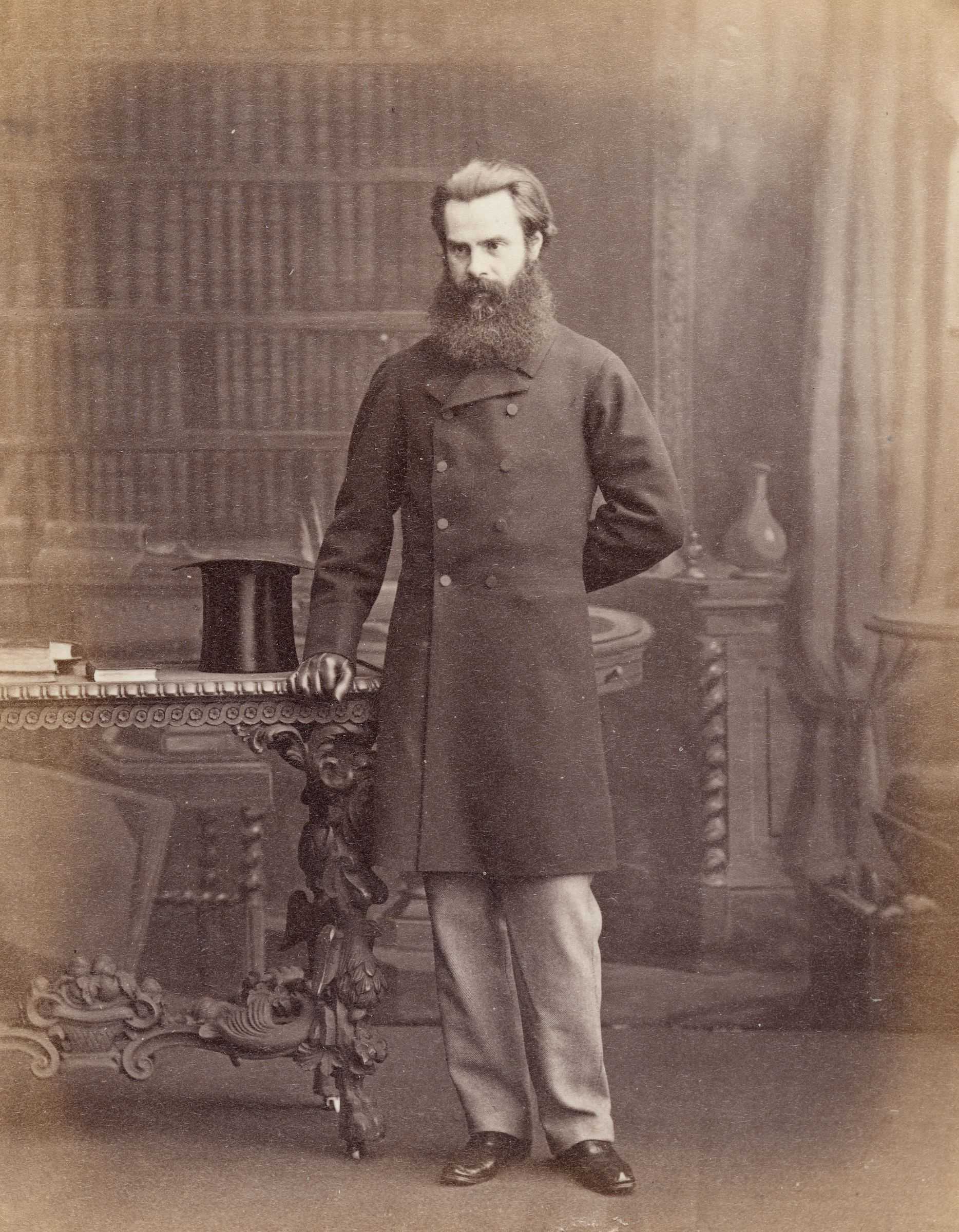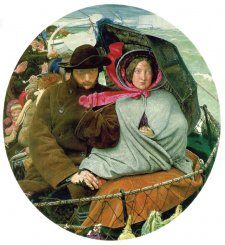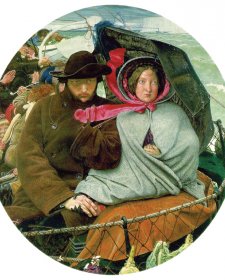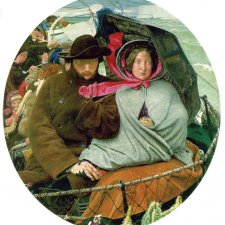Preparations for our exhibition about Thomas Woolner in Australia (scheduled for the summer of 2017–18) are proceeding apace.
Woolner was one of the original seven members of the self-styled 1849 Pre-Raphaelite Brotherhood, together with James Collinson, William Holman Hunt, John Everett Millais, F. G. Stephens and the brothers Dante Gabriel and William Michael Rossetti. In 1852, Woolner sailed from Gravesend to Melbourne, accompanied by two fellow artists and friends Bernhard Smith and Edward La Trobe Bateman. They hoped to make their fortune on the Victorian goldfields; the occasion of their departure inspired their friend and fellow artist Ford Madox Brown to paint his famous roundels The Last of England (1855, Cambridge and Birmingham).
At length Woolner and his companions failed to discover anything like the amount of gold they had in mind, though they did spend four hard but relatively productive months at the Ovens diggings, then at Mt. Alexander (Castlemaine), Fryer’s Creek and, finally, the “wondrous Bendigo.” At length Woolner returned to the practice of portrait sculpture - first in Melbourne, and then in Sydney.
According to his daughter Amy Woolner, writing in 1917, Woolner modelled in plaster approximately thirty portrait medallions of mostly prominent colonists, much helped in that endeavour by introductions furnished by Lieutenant-Governor Charles La Trobe, and Dr and Mrs Godfrey Howitt with whom Woolner stayed in Melbourne. It was presumably through the Howitts that Woolner was introduced to Charles Nicholson in Sydney.
Towards the end of 1854 Woolner took his stock of plaster medallions back to England and had them cast for those sitters who wished to acquire one or more elegant bronzes. Plaster and bronze medallions may be matched with all but four of the names on Amy Woolner’s list, and the exhibition curators and I are anxious to send out this message in a bottle, by all available means, just in case one or more of those “missing persons” are known to private collectors here in Australia or indeed in Britain and elsewhere, surviving in other words in some forgotten corner -because, despite every effort, we have not yet been able to locate any trace of Woolner’s medallions of the following Sydney subjects: the journalist and radical Daniel Deniehy; Sir William Macarthur, the youngest son of John and Elizabeth Macarthur of Camden Park, Menangle; the politician George Macleay, and the convict medical practitioner and surgeon Dr. William Bland.
Woolner’s medallions of William Macarthur’s brother James do exist, so this may have been a case of mistaken identity or simply confusion on Thomas Woolner’s part after many years. However, given that Amy Woolner’s list is otherwise complete and therefore reliable, it is hard to account for the fact that the other three names of Deniehy, Macleay and Bland could have strayed onto it unless Thomas Woolner had indeed portrayed them. All were alive and kicking during Woolner’s brief residence in Sydney in 1853-54, a year he described on the last page of his “goldfields journal” as the happiest of his life.
If you know or have heard of the existence of any portrait medallions, in plaster or bronze, of Daniel Deniehy, William Macarthur, George Macleay or William Bland we would be very glad to hear from you: [email protected] (And do feel free to pass it on.)














